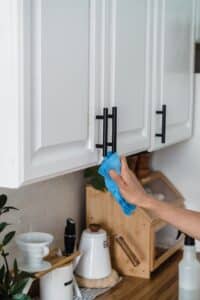Home Staging: Sell Your House Faster and For More

Table of Contents
The difference between a furnished and unfurnished house, if you’ve seen pictures or experienced it first-hand, is startling. The former looks like a home; and the latter, not so much. This contrast comes into play when you’re selling—you’re more likely to make a better impression on buyers when your property is decorated, well-lit, and aesthetically pleasing as opposed to empty and abandoned-looking.
Below, the pros at Seatown Cleaners present everything you need to know about home staging to sell your house faster and for potentially more money.
House staging is packaging your house for a sale
Home staging is the practice of decking your house up for a sale. This usually involves decorating, furnishing, decluttering, and repair and maintenance—if you haven’t already made a list of all the things you need to do, then it’s time to get to work. You pay for the staging out of your pocket (although some realtors offer it as a package deal when you take them on), and the goal is to make your house more appealing for buyers. The National Association of Realtors says staged homes spend less time on the market and command a higher final sales price.
You want buyers to be able to visualize what the experience of living in your house will be like. This is supposed to be an idealized version of reality. For example, if you’re staging a home office, you do not want it to look like your actual office in the middle of use. It should be free of clutter and highly organized, as a dedicated workspace should. If you need help getting your house clean in preparation for staging it, reach out to Seatown Cleaners.
Home staging typically has a big impact
Home staging is powerful on various levels:
- Staged homes look better: Well-staged homes look beautiful and homey. Who doesn’t like green gardens, cushy furnishings, and sparkling floors and walls?
- They offer an emotional connection: Staged homes appeal to buyers on an emotional level. It gives them a glimpse of what their life—and lifestyle—would be like if they lived there.
- They’re organized: Staging isn’t just about the aesthetics. It also gives buyers ideas on how to best organize their furniture for maximum ease and efficiency.
- They’re convenient: In some cases, the staging furniture may be sold along with the house. This can be convenient for buyers who want to move into a furnished place.
The research backs all this up. Buyers offer more money for a staged property as opposed to a similar non-staged one. Furthermore, 81% of buyers say staging makes it easier for them to see the property as a potential home.
House staging can be virtual as well as physical
House staging can be physical as well as virtual (aka digital). When it’s physical, you or a hired staging company makes tangible modifications to the home, including cleaning it up and carting in new furniture. When it’s virtual, computers are involved and little-to-nothing happens physically. Buyers are shown photo-shopped images and sometimes taken through virtual tours of the property.
There are pros and cons to either approach. Physical staging tends to be a more powerful, authentic experience for buyers. Virtual staging is cheaper, more flexible, and convenient—you don’t need to organize in-person tours or rent furniture for the duration. Virtual staging has become commonplace recently thanks to pandemic-related safety considerations.
How much does home staging cost?
It can cost as much or as little as you like. According to The Village Guru, sellers are advised to invest 1 to 2 percent of the estimated market value of their homes. Most homeowners spend $2000 to $3000 on staging, which involves repairs, lighting, decoration, paint, and removing furniture. Props can be a few thousand on top. DIY home staging is an option when you prefer not to invest so much money into it.
Market research is always key
The state of the property market at your location will have a final say on how worthwhile staging will be for you. You must do some research beforehand to get the biggest bang for the buck. Check how other homeowners are showcasing their properties, and gauge the competitiveness by looking at the average sale price in your neighborhood.
Conclusion
For 23 percent of sellers, home staging drives up the price by 1 to 5 percent, says Statista, while a lucky few (<10 percent) see a massive 11 to 20 percent increase. House staging is a worthwhile use of your time and arguably the best way to fetch top dollar for your home.




